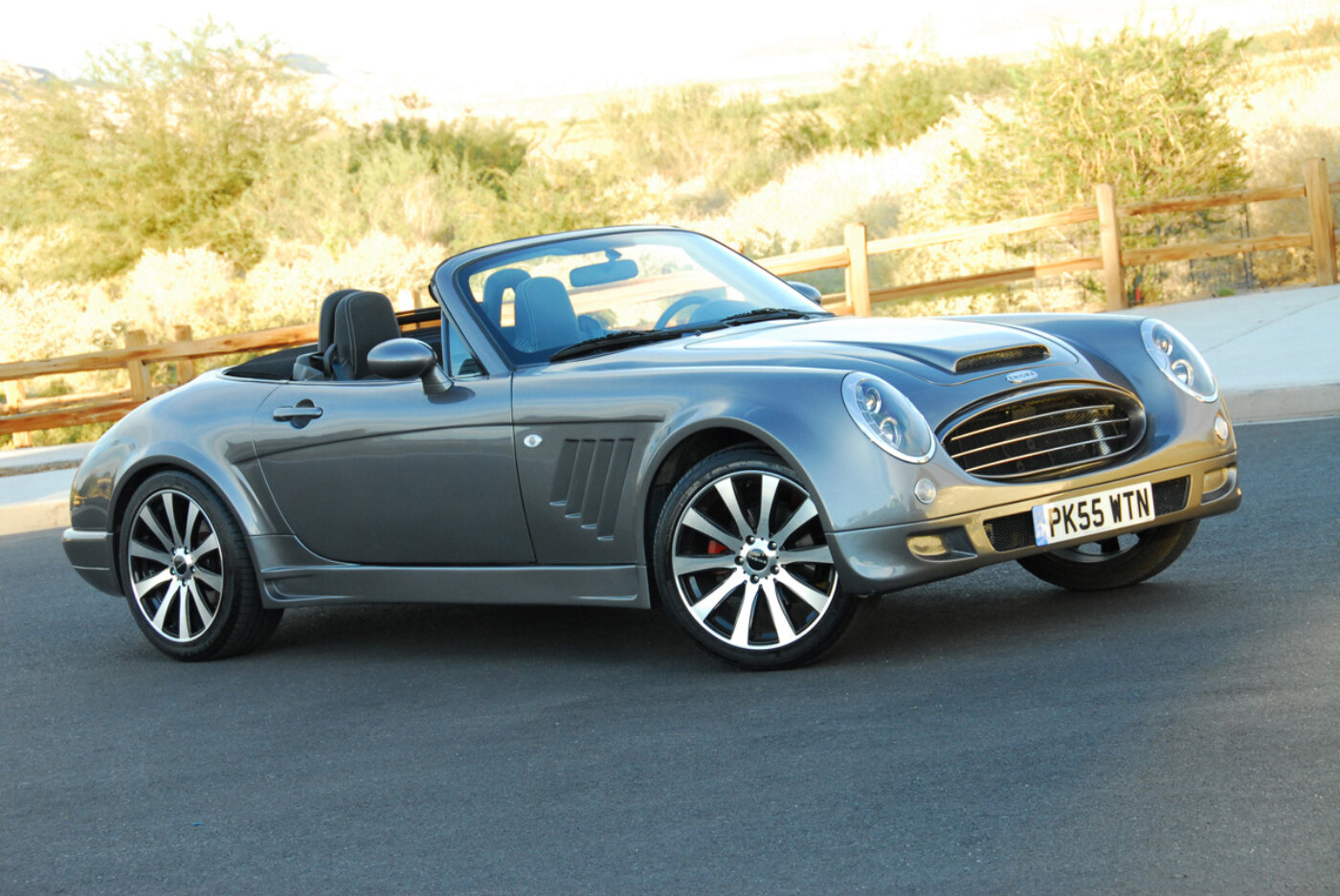
Enigma Cars MX5-based Healey build
Text and Photos by Steve Temple
In aviation parlance, the phrase “drop test” refers to testing an aircraft for carrier landings, since its landing gear has to be much stronger than for land-based aircraft. Which explains why some pilots refer to carrier landings as basically a “controlled crash.” So as early as the 1940s, drop tests were conducted by lifting a carrier-based plane such as the Grumman Hellcat by a crane to a height of as much as 20 feet and then simply dropped on the deck, simulating a sudden impact. Drop tests are still used today, but at even great heights.
Of course, this phrase has even broader applications, in some cases a joking reference to an accident. At least that’s how Kevin Roots described what happened to him in his newly completed Enigma, a forward-looking replica inspired by the classic Austin-Healey 3000. More about that incident below, after we share our driving impressions of the car.
The understated, platinum/taupe paint was barely dry on Roots’ factory-built demonstrator, fresh off the boat from the UK. After sorting it out, he headed across the desert, a few hours drive from Southern California to Las Vegas meet up with me at the SEMA show. Breaking away from all the hubbub of the madding crowds was a welcome respite, and we heading to an overlook on the edge of town for an unobstructed desert background. Quite a contrast from its origins in the British countryside, but perhaps fitting considering the different underpinnings of the Enigma, in comparison to the Austin-Healey’s original offering.
As noted in previous articles, the Enigma uses the durable and plentiful parts from the Mazda MX-5 Miata, but on a purpose-built frame unique to this new replica. Fortunately, it’s a tad wider than a Miata, in order to meet with more acceptance in the “broader” U.S. market. The Miata components consist of the front and rear subframes, connected by an aluminum frame and also topped by a stout steel chassis with sheet-steel panels for the floor and drivetrain tunnel.
The sturdiness of the frame is immediately evident in the solid thunk of the doors closing. Nothing flimsy or fragile here (as an unfortunate encounter would soon confirm). The seats are thickly padded and quite comfortable, and as noted, the cockpit is much roomier than in a Miata. (I’ve tested Miatas over the years, and find them enjoyable cars, but they feel a bit cramped and exposed at times.) The dash has an OEM fit and finish, as we’d expect since it’s comprised of Mazda parts, as does the well-braced windshield frame that’s taller than the factory setup. That’s because the frame and surround is mounted to the bulkhead, which is higher, and the seat is situated lower as well.
As we pulled smartly onto the highway, the ride feels stable, reassuring. It’s clearly a carefree car for long cruises or driving regularly to work without a second thought. While its manners are predictable, the handling is still responsive. We’ve driven many a nervous replica that required constant and focused attention, and this isn’t one of them. I’d relish a long road trip in the Enigma, and likely arrive refreshed and relaxed (which is exactly what Kevin reported after his long drive across the desert to Vegas).
Knowing U.S. driving enthusiasts as we do, however, besides sometimes having a bit more girth, they also have a penchant for more power as well. After all, if there’s already sufficient horsepower on tap, then more must be better, right?
Well, yes and no. When threading through freeway traffic, the Enigma’s 170hp 2.0-liter engine is a smooth revver, and never felt wanting. And it won’t wear you down with excess noise or heat. On the other hand, after feeling how settled the chassis is, we’d have no reluctance about upping the ante under the hood (hence a Lexus 4.0-liter V8 version is in the works, which will use the front suspension from a Mazda RX8).
After experiencing the Enigma firsthand, I can fully understand why Kevin Roots signed up as a U.S. distributor for the car. But it’s not simply a business deal, as his automotive roots run deep.
Relating his upbringing, “My father would say, ‘if you are going Tiger hunting, first find your Tiger.’ I was very young and didn’t quite appreciate the pearl of wisdom my father often espoused. Many years later I find that wisdom and life are often at odds.” Explanation to follow, but first a bit more about his experience with British cars in general, and the Enigma in particular.
“I had decided it was time for a car that was built for comfort rather than speed,” he explains. “My English car restoration and renovation business had shown me that a lot of fun cars had shrunk to a size or level from the ground, beyond my comfortable capabilities. The days of me sliding into a MG Midget or an original Mini are sadly past—unless they come equipped with an on-board chiropractor,” he quips, with typical British humor.
His quest was for a statelier ride that he and his wife would be able to use in retirement years. After arriving in the U.S. from England some 20 years ago with just two suitcases, and not speaking the language (American English), he came across an ad for a Thirties-style Royale drop head, using a Jaguar base car.
“This, I thought would be a great starting place, as there are many cheap XJ6s in the U.S. and a good kit would make a suitable comfort car,” he recalls. After many calls to England over the next six months revealed that the Royale Motor Co. of Preston, Lancs. was no longer, and a Ford-based model called the Sabre was available from Automotive Creations Ltd. base in Thornaby, Cleveland. Malcolm Badger, the owner of Automotive Creations, became his speed-dial number seven, and they conversed on a monthly bases, during his efforts to track down a chassis, car, molds or drawings for the Royal. Malcolm’s search proved fruitless, except that a friendship grew between them, and this association would ultimately fulfill Roots’ quest.
An unexpected trip to England several months later gave him the opportunity to meet Malcolm and thank him face-to-face for his efforts. On arriving at his premises Malcolm was keen to show him the newest kit car he was taking on, and Roots’ life suddenly changed.
“Before me was the impossible, a kit car like no other kit car, an Enigma in both name and reality,” he exclaims. “The look, the quality, the solidity, the stance, it was all right, it was beyond right. It was developed, refined, classic, modern, it was an Enigma, it was my Tiger.”
Having found his Tiger, “I had to bag it, and after a drive of several hundred miles, I landed at the door of Healy Designs and Mr. Martin Williamson.”
Martin had originally designed the car to be a revised Austin-Healey 3000, with smoother, more modern and substantial lines (see Enigma’s web site for a telling visual comparison between them). It even had Austin Rover’s blessing before they went into bankruptcy. Rather than let many years of work go to waste, Martin redesigned the car over the next few years to create a single-source kit car.
At the point of Roots’ arrival, Martin had a Mark I and Mark II model in production to cover the Mazda MX5 donors up to 2004. He had a Mark II sitting in his shop oozing the quality of finish that he had found on Malcolm’s example, but suffering from aftermarket suspension trials that proven less than successful.
They talked for a few hours about the car, the U.S. market and changes that would need to be made for an American model, apart from making it left-hand drive. The interior of American cars in general are at least several inches wider than an English car due to the larger average size of Americans, but more important the average American is two inches taller than the average European.
As already noted, the Mazda MX5 has sold well in the U.S., but its lack of legroom and the view of the windshield top experienced by tall people have led to a more restricted market. Not wishing to fall into the same trap, the Enigma Mark III was engineered to give a 6’4” person a mid-screen view and sufficient shoulder room to be comfortable. Using the 2005 through 2014 model MX5 for the Mark III would allow the use of doors almost four feet in length giving greater ease of ingress and egress. The 2.0-liter engine and five/six speed or auto transmissions also enhanced the package from previous models.
Further smitten by what he saw at the factory, “I would have taken a kit back to America then and there if I could have,” Roots relates. “But Martin talked me into having a factory-built car and looking at being the U.S. agent for the Enigma. Over the years I have sold lots of cars to people, but I have never knowingly sold a bad one. So for me to be an agent I would have to be convinced the car was safe, of the best quality and all it claimed to be.”
His plan was simple: buy a car, ship it to the U.S., then strip it to the last nut and bolt, put it back together again and then try and break it by driving it, then talk business.
But this is where wisdom and life were at odds, as mentioned above. The buying and shipping took a little longer than planned due to development of the Mark III, a parade and a car show. The kits are manufactured in a European factory where traditions are taken seriously. For this U.S. demonstrator, it was born of a 2005 English Mazda MX5 (compared in detail with the previous gen in a recent issue of CAR BUILDER) and a few parts from a Germany lefthand-drive Mazda MX5, in a factory in Europe in 2015. The 2.0-liter fuel injected engine is backed by six-speed manual transmission.
Lights are from a BMW Mini and Nissan Micra, plus aftermarket turn signals. Every other part is from a Mazda MX5: interior with heated seats, Bose stereo, electric windows, ABS brakes, brake lines, electrical items, suspension, fuel tank, and so on. The body is made from fiberglass with steel doors, and windshield’s surround from the MX5 is reskinned.
The arrival in Los Angeles almost a year from the original meeting with Martin was a joyful day, the first Enigma in America. The shipping had taken little toll on the car, so it started on the turn of the key, the leather upholstered seats gave off the new car smell and everything worked. “For any gearhead like myself, it doesn’t get any better!”
It took several attempts to load the car on to the trailer, which involved several long runs around block, but with failing light and not wishing to push his luck, he loaded and wrapped the car up for its journey to the workshop.
Over the next several weeks he arranged the insurance and registration, as well as stripped and inspected the car from back to front. The idea being that driving an unknown car at speed without checking every nut, bolt and washer is just foolhardy. So the suspension, brakes steering and bits were examined, rechecked torqued and re-torqued, with the rather pleasing result that nothing was found to be lacking or missing.
The only complaint in the first weeks of driving was the slow filling of the gas tank and a fuse that blew sometimes when the lights were on. The former was easily cured by moving the vent pipe closer to the neck end of the filler pipe. It did involve stripping a lot of interior to get to the tank end of the filler pipe, but that proved to be very straightforward.
The fuse was an oversight that had been missed and not changed for a larger value to accommodate the new more demanding headlamps. Over the next several weeks and 3,800 miles, the smile on his face increased as speeds were increased, handling pushed the envelope more and more and the car became more familiar.
“I personally believe it takes a year of driving in all and any conditions to really know a car, longer if you are just commuting,” Roots says. “To know instinctively what’s going to happen in any circumstance is both satisfying and may save your life.
Life and wisdom, Part Two: There is no maneuver or technique that can fix stupid, Roots astutely observes. Going to gas up a car that cost nearly a million dollars to develop should be easy—until a lady inexplicably decides that stop signs are merely a suggestion rather than a command, and enters your path of travel from stage right traveling at 60 mph and you have nowhere to go but into her car. Just having sufficient time to turn the wheel so as to be corner hit rather than head on may have saved the Enigma, but was still the deathblow for her Saturn. Not only that, “The Enigma’s steel space frame chassis is so strong and solid it would make a Russian tank jealous,” Roots opines. The important fact was that there were no life-threatening personal injuries.
“By the time I had got out of the Enigma and checked the lady, the California Highway Patrol had appeared out of a puff of smoke,” he recalls. “How do they do that? Well, living in a small town, both the car and myself had become known (the English guy with the posh car), so with similar puffs of smoke the sheriff’s department and school police appeared, as well as most of the local populace.”
It must have been a slow gossip day. Once the dust had cleared and the tow trucks loaded, the townspeople stood hat in hand with the reverence of a funeral while the trucks left.
The next day found him telephoning his newly-designated insurance company with the sad news. He feels that AAA is all its claims to be and more. The assessor was happy to have Roots’ shop to do the repairs, so work started stripping the car of its one-piece front end. The rest of this story is still unfolding, which is how his Enigma got named “Patience.”
So to recap, Roots found a car that he wasn’t originally looking for, bought it, took it apart, put it back together, and then had it “drop tested.” What did he discover through it all?
“I found out that English men, myself included, are crazy, but they design and build the best automobiles in the world. The classic but modern lines of the Enigma with larger interior space than either the Healey or the Mazda make it a usable daily driver.”
Also, the wider and longer wheelbase than its donor, with a solid space frame chassis that still equals the weight of the original car, all add up to handling improvements. Plus the trunk can accommodate two sets of golf clubs. What’s not to like? Reliability of Japanese engineering, classic English design, an a one-source donor. Could it get any better? Not for Roots.
“Enigma I have, U.S. agent I am, crazy Englishman I’ll always be. Tiger found, bagged and mounted!”
SOURCE:
Enigma Cars USA
phone: 951/830-4227
email: englishroots@verizon.net

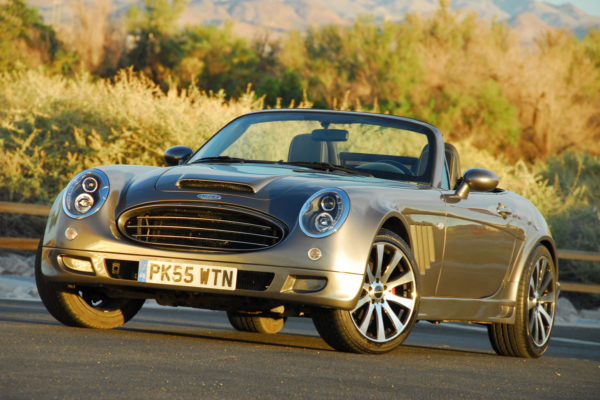
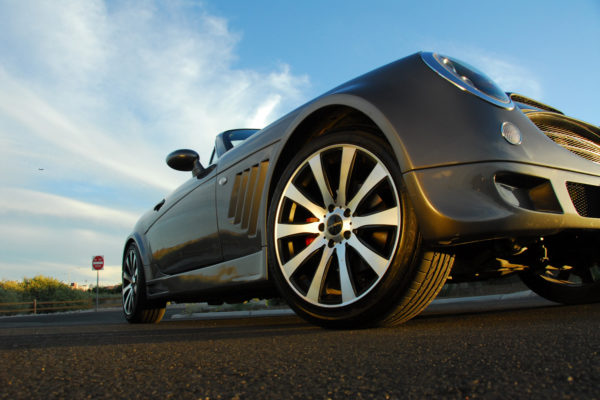
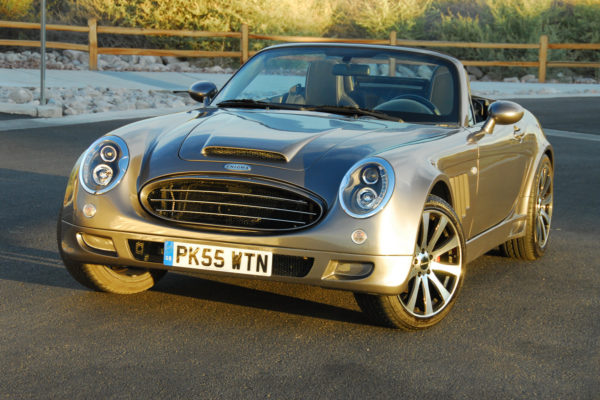
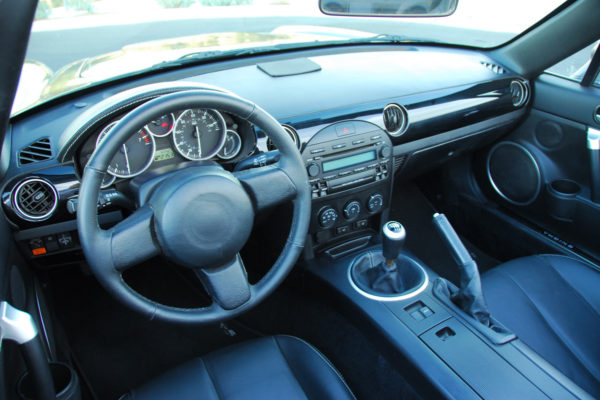
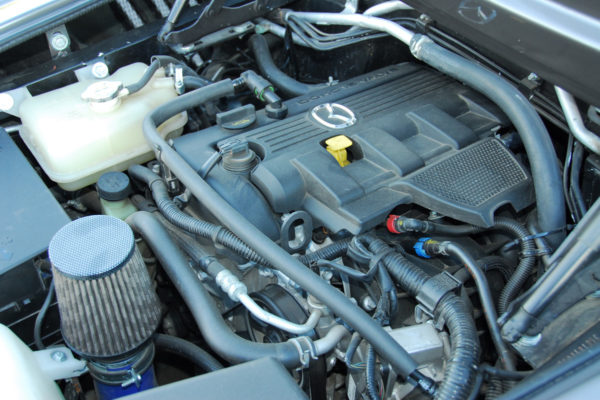
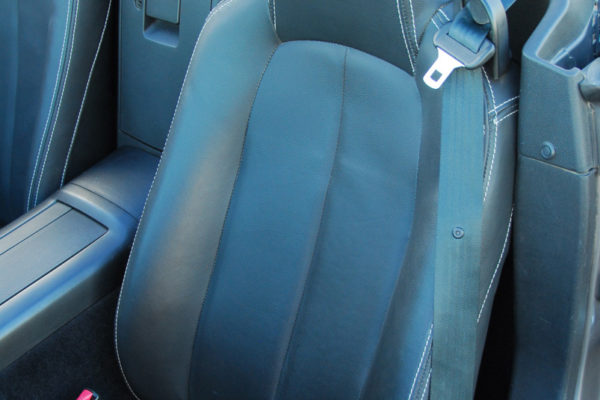
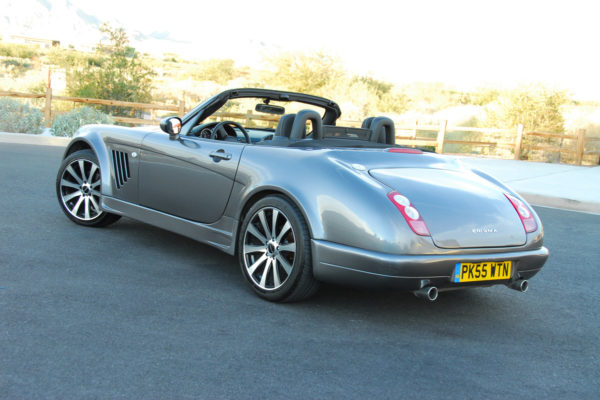
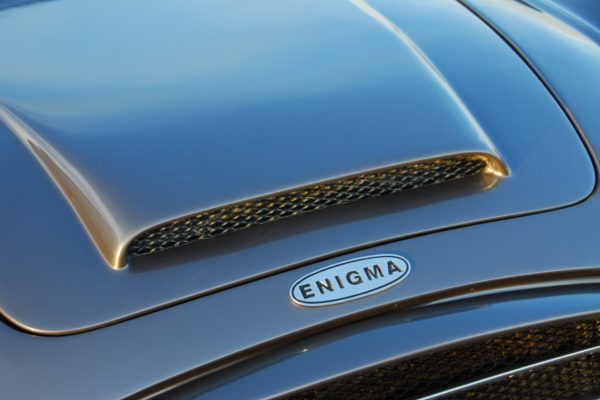
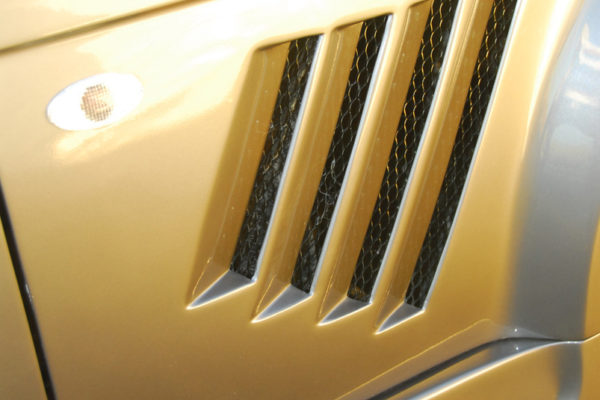
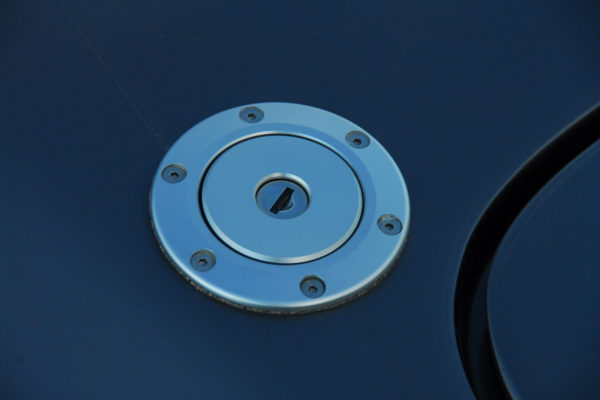
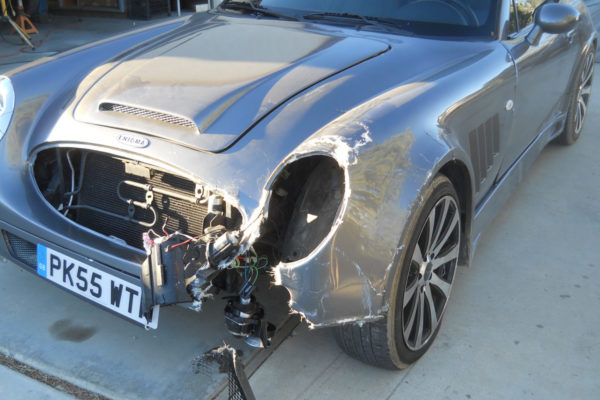
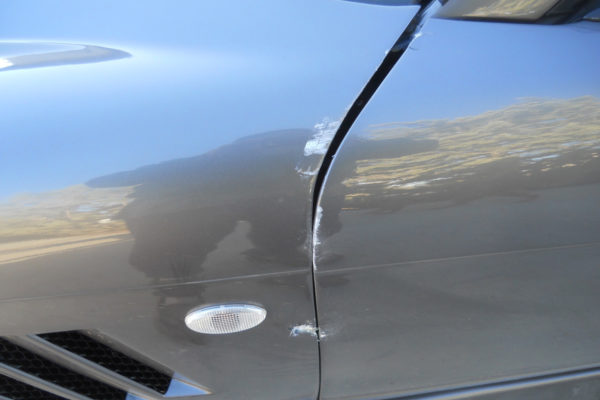
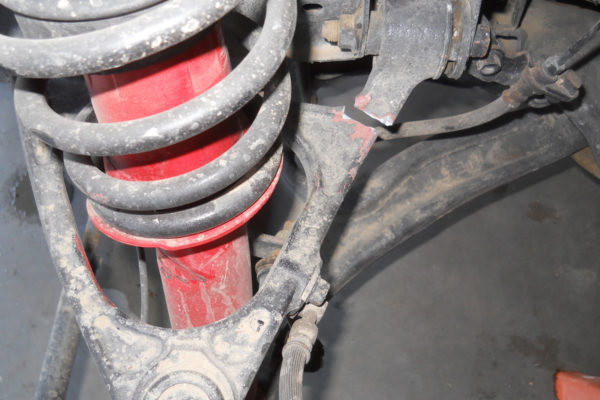
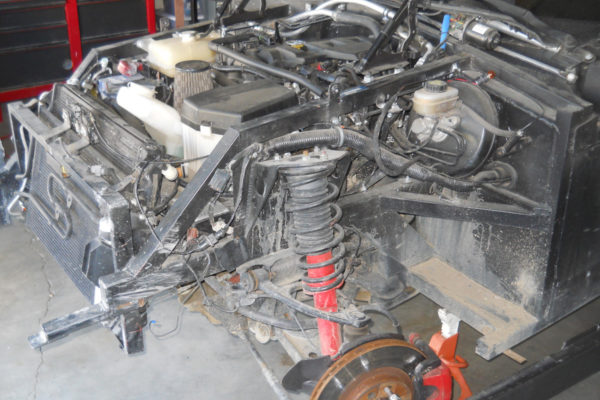

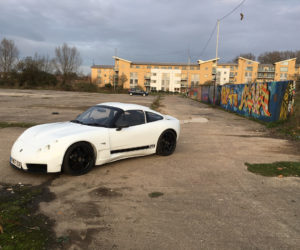
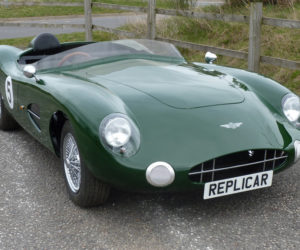
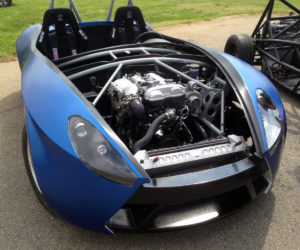
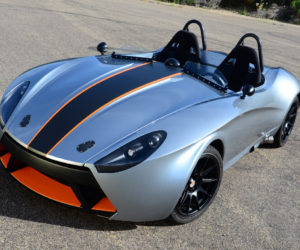
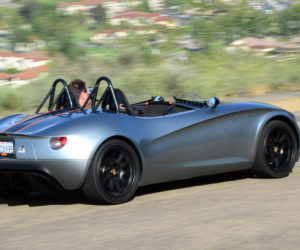




Comments for: TIGER HUNTING
comments powered by Disqus